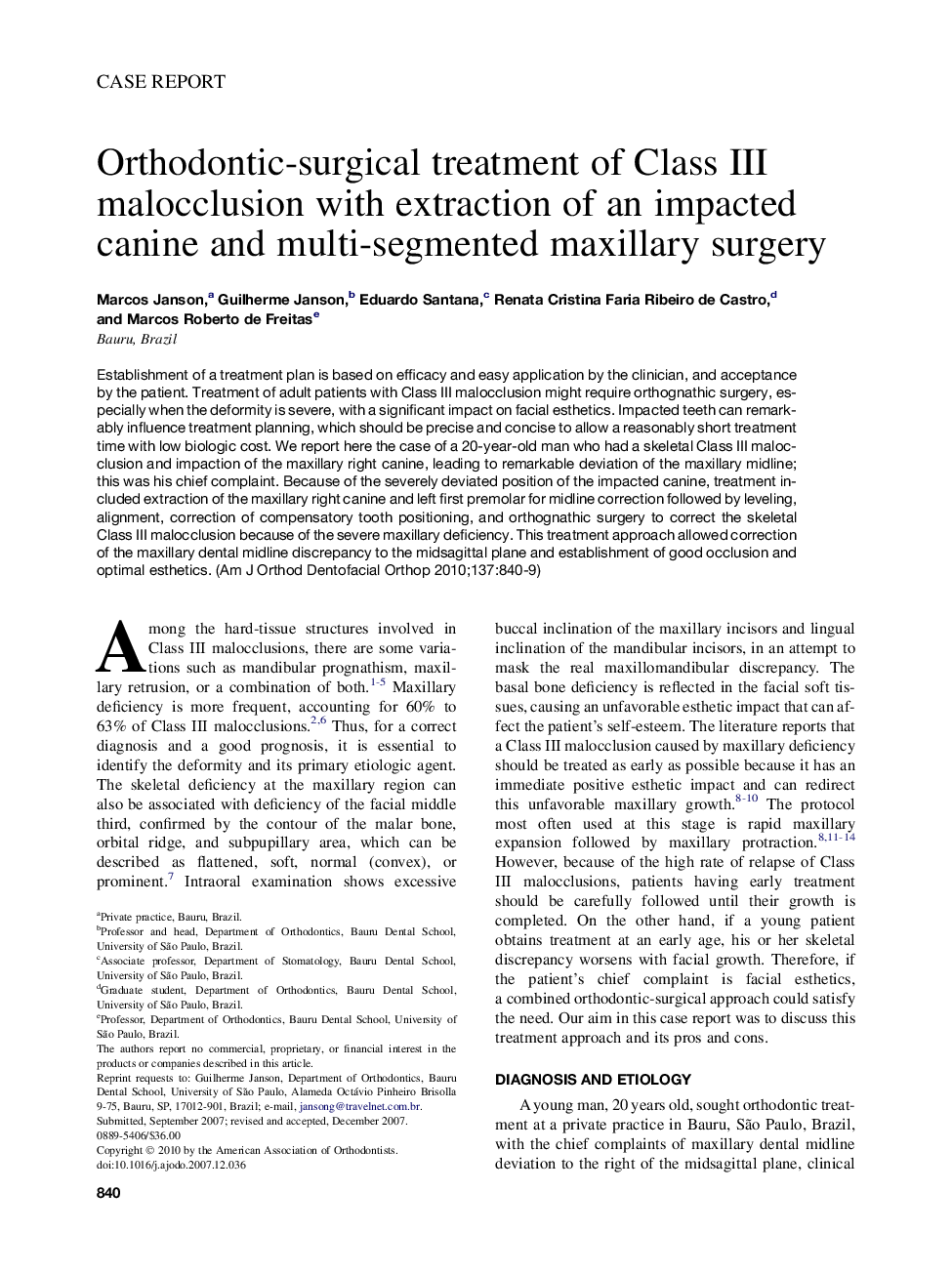| Article ID | Journal | Published Year | Pages | File Type |
|---|---|---|---|---|
| 3117620 | American Journal of Orthodontics and Dentofacial Orthopedics | 2010 | 10 Pages |
Establishment of a treatment plan is based on efficacy and easy application by the clinician, and acceptance by the patient. Treatment of adult patients with Class III malocclusion might require orthognathic surgery, especially when the deformity is severe, with a significant impact on facial esthetics. Impacted teeth can remarkably influence treatment planning, which should be precise and concise to allow a reasonably short treatment time with low biologic cost. We report here the case of a 20-year-old man who had a skeletal Class III malocclusion and impaction of the maxillary right canine, leading to remarkable deviation of the maxillary midline; this was his chief complaint. Because of the severely deviated position of the impacted canine, treatment included extraction of the maxillary right canine and left first premolar for midline correction followed by leveling, alignment, correction of compensatory tooth positioning, and orthognathic surgery to correct the skeletal Class III malocclusion because of the severe maxillary deficiency. This treatment approach allowed correction of the maxillary dental midline discrepancy to the midsagittal plane and establishment of good occlusion and optimal esthetics.
